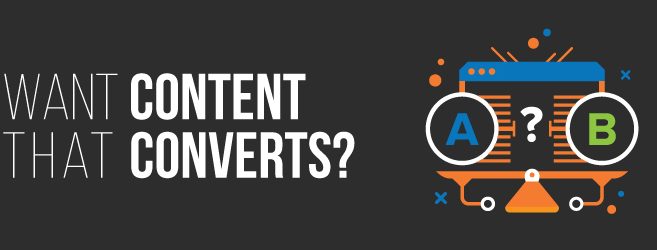Content Strategy: How it Works and Why You Need It

Want Content that Converts? Forget the 5 Ws of Writing – Content Strategy is How it Works
Everyone knows the bare bones of a good story. Whether it’s a joke for the break room, background for a business plan, or just a quick social update, the “who, what, why, when, where” is vital to sharing a story that has the potential to compel your audience.
Creating that potential is where content strategy comes in — and that’s also where much of the content out there falls short. @meghscase, author and contributor for the Content Marketing Institute, summed it up best saying,
“Content strategy is about providing the right content, to the right people, at the right times – for the right reasons.”
So what does that mean for marketers? Simply talking about your topic (or product, or cause, or service) does not grab your readers’ interest. But using those story staples to cue your readers into taking the next step does.
Let’s assume your content isn’t working and you want to know why. You’ve invested time and money into analyzing the best-performing keywords, hired someone to write with them, designed a beautiful site where the copy can live, and yet the conversions just aren’t there.
Read More: Healthcare Content Marketing Strategy
So what’s the issue?
If you haven’t given your audience the proper cues to pull them into the conversion path, they simply do not know how to buy in. Shoving a call to action button above the fold doesn’t solve it either. Finding that balance between what-it-is and get-it-now can be uncertain, but it doesn’t have to be complicated if you follow this stair-step logic:
Step 1: Decide what you really want the reader to do (the right content)
Whether that’s sign up now, get more info, donate today, or buy our product, knowing the single result you want to achieve will help you decide how much up-front info your reader needs and what the tone should be.
Step 2: Identify your real audience (to the right people)
It may not be who you assume. Do the research and see who comes to your site, who stays, and who converts. If you’re seeing a difference between who you thought you were talking to and who actually buys in, try some A/B testing to whittle down to the content that converts.
Step 3: Think about how much info your reader needs to buy in (at the right time)
This is the challenge. It’s tempting to pop a text link or an action button in the first paragraph but if your reader doesn’t yet know what they’re interested in, much less why they need it, then you’re wasting good space. Don’t stress; simply re-read your content — if it sounds like a used car sales pitch, take out the first two actions and revise.
Step 4: Understand why you’re writing (for the right reasons)
The mad dash to create unique content and stay ahead in the search results has, unfortunately, resulted in content that just isn’t relevant. Use the prior three steps as a lens to help determine the purpose of what you’re writing and how it will help your business. If it doesn’t, don’t bother — spend those marketing dollars somewhere that will help give you the best results. (A follow-up CRM campaign to those who’ve already converted, alternative advertising to those like your current customers, and boosts for existing content that works are just three options to consider.)
The bottom line is that you know way more about your product that your readers ever will. Give them content cues that make them feel informed, empowered, and enabled. In return, you will get more conversions and click throughs.





